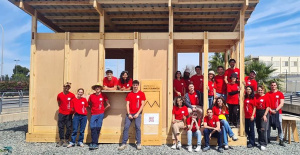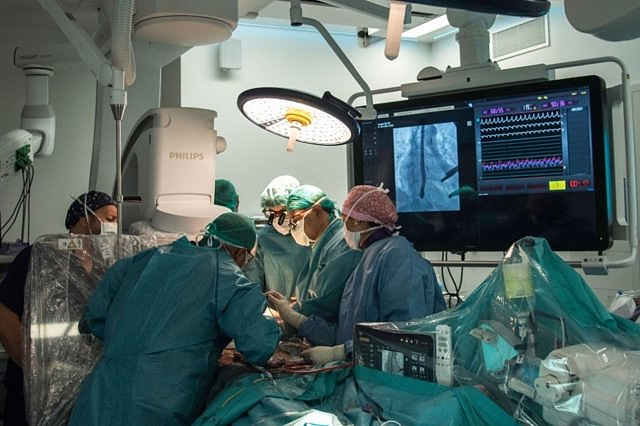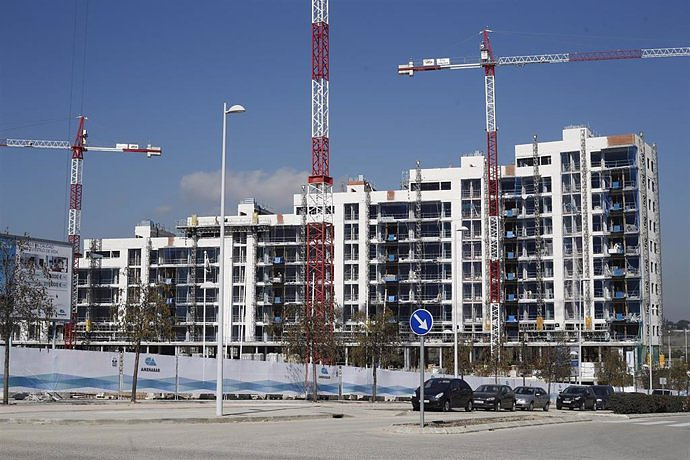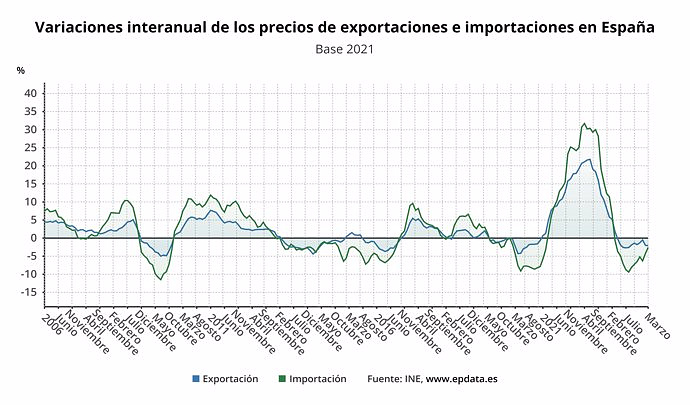MADRID, 4 Abr. (EUROPA PRESS) -
Public health has once again reached its all-time high of patients on the waiting list for non-urgent surgery in the National Health System (SNS) as a whole, with 793,521, according to data as of December 31, 2022 published by the Ministry of Health this Tuesday.
Thus, there are 86,781 more people on the waiting list than a year ago, 12.28 percent more, and 51,003 more than in June (742,518), 6.87 percent more. The average time for an intervention is now 122 days, compared to 113 in June 2022, although it is one day less than a year ago.
Health points out, however, that "the average waiting time is at values very similar to those of December 2021", when surgical activity was recovered after COVID-19, "and even to dates prior to the start of the pandemic".
However, 22 percent of patients have been waiting for more than six months to be operated on, which again represents a worsening compared to a year ago (20.3%) and June 2022, when this percentage was 17.6 percent.
As usual, the specialty with the largest number of patients is Traumatology with 190,990 patients waiting (177,239 a year ago and 187,404 in June 2022); It is followed by Ophthalmology with 172,093 patients (150,355 in December 2021 and 159,218 in June of last year). Meanwhile, the specialty with the lowest number of patients is Thoracic Surgery, with 2,418 (2,101 in December 2021 and 2,355 in June), followed by Cardiac Surgery with 3,642 (3,533 a year ago and 3,304 in June).
The specialties with the longest average waiting time are Plastic Surgery with 242 days (226 in June) and Neurosurgery with 203 (193 six months ago). Meanwhile, Dermatology with 75 days (12 more than in June) and Cardiac Surgery with 80 (75 in June) are the specialties with the lowest average waiting times.
The 11 clinical processes that are specifically monitored in this information system have an average waiting time of 95 days (90 six months ago). The average delay registered for cataract interventions, one of the most frequent processes, is 74 days (70 in June). Surgery for benign prostatic hypertrophy stands at 131 days, the same as in June, and the operation for 'bunions' at 133 (122 six months ago).
By autonomous communities, Castilla-La Mancha and the Canary Islands have the longest waiting time for the operation, with 157 days, ahead of Extremadura (156), Cantabria (154) and Catalonia (154). The least affected autonomies are Madrid (63 days), the Basque Country (73) and Galicia (75).
There are a total of nine autonomous communities with a national waiting period of 122 days: Andalucía (134), Aragón (128), the Balearic Islands (124), the Canary Islands, Cantabria, Castilla y León (123), Castilla-La Mancha, Catalonia and Extremadura. Below this threshold are: Madrid, the Basque Country, Galicia, Asturias (94), the Valencian Community (88), Murcia (100), Navarra (85), La Rioja (111), Ceuta (82) and Melilla (39). .
The autonomy with the most patients on the waiting list if the population per 1,000 inhabitants is taken into account is, as usual, La Rioja (with 8,738 patients in total), slightly above Cantabria (15,314). Behind is Asturias (22,956), Catalonia (173,494) or Extremadura (21,786). At the opposite extreme is Melilla (barely 400 patients), the Basque Country (23,029), Madrid (72,626) and the Balearic Islands (13,757).
The Autonomous Communities that have more patients waiting for more than six months are Cantabria (32.3%), Extremadura (32%) and Catalonia (31.6%). Less than 30 percent have Andalusia (25.3%), Aragon (25.6%), Asturias (13.1%), the Balearic Islands (22.2%), the Canary Islands (28.5%), Castilla y León ( 24.9%), Castilla-La Mancha (29%), Valencian Community (13.5%), Galicia (6.7%), Madrid (4.3%), Murcia (18%), Navarra (10, 9%), the Basque Country (7.1%), La Rioja (22.9%), Ceuta (13.1%) and Melilla (0%).

 Exploring Cardano: Inner Workings and Advantages of this Cryptocurrency
Exploring Cardano: Inner Workings and Advantages of this Cryptocurrency Seville.- Economy.- Innova.- STSA inaugurates its new painting and sealing hangar in San Pablo, for 18 million
Seville.- Economy.- Innova.- STSA inaugurates its new painting and sealing hangar in San Pablo, for 18 million Innova.- More than 300 volunteers join the Andalucía Compromiso Digital network in one month to facilitate access to ICT
Innova.- More than 300 volunteers join the Andalucía Compromiso Digital network in one month to facilitate access to ICT Innova.-AMP.- Ayesa acquires 51% of Sadiel, which will create new technological engineering products and expand markets
Innova.-AMP.- Ayesa acquires 51% of Sadiel, which will create new technological engineering products and expand markets Nadal is still alive and exciting in Madrid
Nadal is still alive and exciting in Madrid The Treasury injected another 500 million into the SEPI in March to purchase Telefónica shares
The Treasury injected another 500 million into the SEPI in March to purchase Telefónica shares The complaints from ERC and PP against Sánchez's interview do not reach the JEC in time, which did not consider suspending it
The complaints from ERC and PP against Sánchez's interview do not reach the JEC in time, which did not consider suspending it Occupancy in Spain for the May long weekend exceeds 80%, with Andalusia and the Canary Islands as preferred destinations
Occupancy in Spain for the May long weekend exceeds 80%, with Andalusia and the Canary Islands as preferred destinations How Blockchain in being used to shape the future
How Blockchain in being used to shape the future Not just BTC and ETH: Here Are Some More Interesting Coins Worth Focusing on
Not just BTC and ETH: Here Are Some More Interesting Coins Worth Focusing on They create a bank of machinery sounds to prevent breakdowns through artificial intelligence
They create a bank of machinery sounds to prevent breakdowns through artificial intelligence UPV students build a prototype of a wooden house to move to Equatorial Guinea
UPV students build a prototype of a wooden house to move to Equatorial Guinea The UA opens the call for the Impulso 2024 Awards for the best innovative business initiatives
The UA opens the call for the Impulso 2024 Awards for the best innovative business initiatives ALI, virtual assistant from Alicante, internationally recognized by the OECD
ALI, virtual assistant from Alicante, internationally recognized by the OECD A million people demonstrate in France against Macron's pension reform
A million people demonstrate in France against Macron's pension reform Russia launches several missiles against "critical infrastructure" in the city of Zaporizhia
Russia launches several missiles against "critical infrastructure" in the city of Zaporizhia A "procession" remembers the dead of the Calabria shipwreck as bodies continue to wash up on the shore
A "procession" remembers the dead of the Calabria shipwreck as bodies continue to wash up on the shore Prison sentences handed down for three prominent Hong Kong pro-democracy activists
Prison sentences handed down for three prominent Hong Kong pro-democracy activists ETH continues to leave trading platforms, Ethereum balance on exchanges lowest in 3 years
ETH continues to leave trading platforms, Ethereum balance on exchanges lowest in 3 years Investors invest $450 million in Consensys, Ethereum incubator now valued at $7 billion
Investors invest $450 million in Consensys, Ethereum incubator now valued at $7 billion Alchemy Integrates Ethereum L2 Product Starknet to Enhance Web3 Scalability at a Price 100x Lower Than L1 Fees
Alchemy Integrates Ethereum L2 Product Starknet to Enhance Web3 Scalability at a Price 100x Lower Than L1 Fees Mining Report: Bitcoin's Electricity Consumption Declines by 25% in Q1 2022
Mining Report: Bitcoin's Electricity Consumption Declines by 25% in Q1 2022 Oil-to-Bitcoin Mining Firm Crusoe Energy Systems Raised $505 Million
Oil-to-Bitcoin Mining Firm Crusoe Energy Systems Raised $505 Million Microbt reveals the latest Bitcoin mining rigs -- Machines produce up to 126 TH/s with custom 5nm chip design
Microbt reveals the latest Bitcoin mining rigs -- Machines produce up to 126 TH/s with custom 5nm chip design Bitcoin's Mining Difficulty Hits a Lifetime High, With More Than 90% of BTC Supply Issued
Bitcoin's Mining Difficulty Hits a Lifetime High, With More Than 90% of BTC Supply Issued The Biggest Movers are Near, EOS, and RUNE during Friday's Selloff
The Biggest Movers are Near, EOS, and RUNE during Friday's Selloff Global Markets Spooked by a Hawkish Fed and Covid, Stocks and Crypto Gain After Musk Buys Twitter
Global Markets Spooked by a Hawkish Fed and Covid, Stocks and Crypto Gain After Musk Buys Twitter Bitso to offset carbon emissions from the Trading Platform's ERC20, ETH, and BTC Transactions
Bitso to offset carbon emissions from the Trading Platform's ERC20, ETH, and BTC Transactions Draftkings Announces 2022 College Hoops NFT Selection for March Madness
Draftkings Announces 2022 College Hoops NFT Selection for March Madness























